PHOTOS BY GREGG YAN
“Safari” in Swahili, the trade language of East Africa, means “to go on an adventure.”
I recently had the chance to tick off a long-standing item on my bucket list: to go on a wildlife safari in Africa.
We were able to visit renowned sites, such as the Ngorongoro Conservation Area, Serengeti National Park, and Olduvai Gorge in Tanzania, plus Lakes Nakuru and Naivasha in neighboring Kenya.
SPECIAL APPEARANCES
Wildlife safaris are typically booked months ahead via highly-reputable, ethical operators. We were outfitted by Top Climbers Expeditions in Tanzania and Ndurumo Safaris in Kenya. Each provided a hefty all-terrain Land Rover, as large as a small Pinoy truck. The Rovers’ roofs swung open to provide us with 360-degree views while letting in cool breezes (East Africa can be colder than Baguio, especially at night and in the mornings).
We were lucky enough to see Africa’s “Big Five” – the Lion, Leopard, Elephant, Rhinoceros, and my favorite, the Cape Buffalo. The “Ugly Five” – the Warthog, Hyena, Marabou Stork, Vulture, and Wildebeest – also answered the roll call.
Each foray would reveal a menagerie of animals, from sprinting Ostriches to small, secretive Antelope-like Duikers.
CLOSE ENCOUNTER
Accommodations were basic but comfortable enough for those used to the outdoors. Large, dome tents about six feet high were set up by the guides as soon as we entered the park. The food was superb, prepared by a trained chef. We lucked out with a chef who knew exactly how to prepare Pinoy food – a welcome reprieve after weeks of African meals!
Though some safaris offered walking tours, we never left our vehicles except at camp (we’re rule-following Pinoys, after all). All our shooting was done inside Land Rovers.
Still, there were more than enough animals to photograph, some at close range. A male Lion even slept six feet away from our vehicle. We could literally open the door and grab his tail!
SAFARI SNAPS
Sharing some snaps from the wildlife safaris we undertook, as captured by my camera Horus, held together by duct tape.
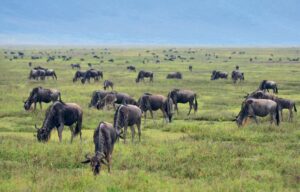
Known in Swahili as Nyumbu, Blue Wildebeest (Connochaetes taurinus) are the most common and conspicuous grazers inside Ngorongoro Crater. In the adjoining Serengeti Park, nearly two million of these cow-like Antelope travel up to 2000 kilometers in an epic annual journey known as the Great Migration. 
Skittish herds of Swala or Thomson’s Gazelle (Eudorcas thomsonii) prance across the savannah. I saw this group en route to a watering hole in Kenya. Vast tracts of grass combined with seasonal rains ensure a steady supply of food for millions of grazers. 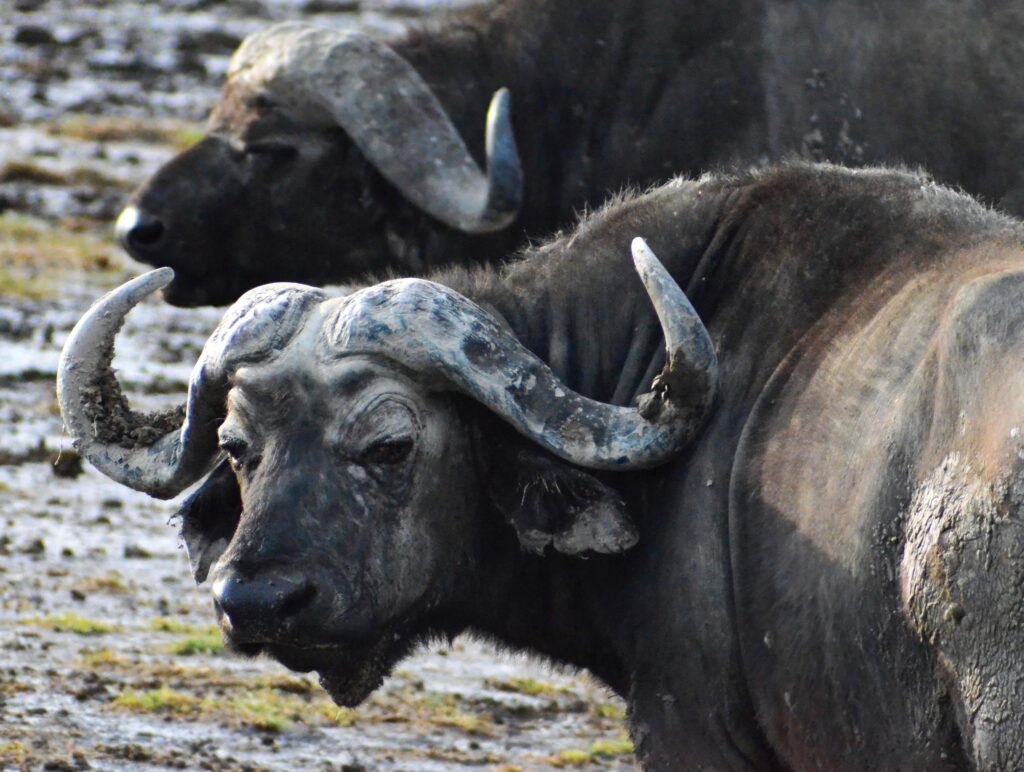
Mbogo or Cape Buffalo (Syncerus caffer) have always been one of my favorites! These massive bovines are considered one of Africa’s “Big Five” – the five most dangerous animals one can encounter. When enraged, Cape Buffalo are said to be unstoppable. Nothing short of a direct heart shot will stop one. 
Painted Horses! The Burchell’s Zebra (Equus quagga burchelli) is quite possibly the most beautiful of all the animals on the African savannah. Their stripes are unique to each individual and serve to confuse predators, especially when the zebras travel as a herd. Africans call them Punda Milia and they can aggregate in groups thousands strong. The key to photographing them – and other herding or schooling animals – is to pick out individuals and make them stand out. I photographed the stallion at the left on a very cold morning in Kenya. 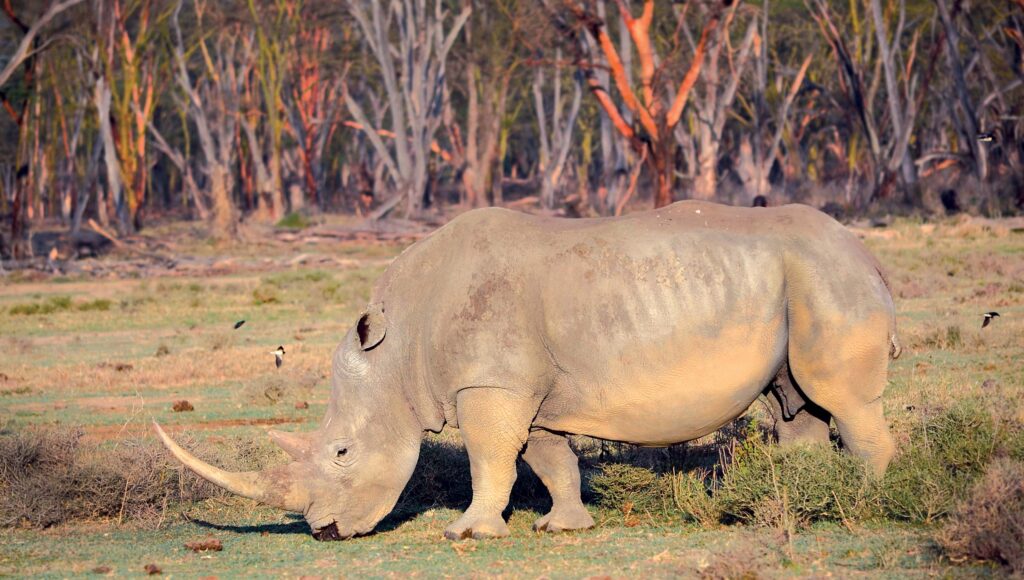
I saw this Kifaru or Southern White Rhinoceros (Ceratotherium simum simum) grazing beside Lake Nakuru in Kenya. Next to African Elephants, these are the world’s largest land mammals. The conservation organization where I started out, WWF, began its work conserving these magnificent animals back in 1961. Largely due to conservation efforts, populations of the Southern White Rhino are hanging on. Sadly, populations of the Northern White Rhino have been completely decimated due to poaching. They are now extinct in the wild, prime examples of why we need to care for the world’s endangered species. 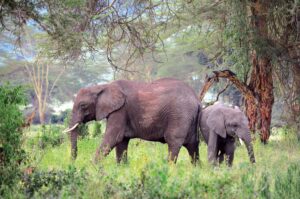
The African Bush Elephant (Loxodonta africana) is the world’s largest land animal, reaching nearly four meters at the shoulder. Referred to as Tembo by Africans, they remain one of the most iconic species on the planet. Though some herds have been decimated by poachers for their ivory tusks, many of these gentle giants are still hanging on in the National Parks and Game Reserves of Africa. We saw them inside Ngorongoro Crater in Tanzania. Readers can help save Elephants by getting in touch with nonprofits like WWF. 
Twigga are the tallest animals on Earth! Rothschild’s Giraffes (Giraffa cameleopardis rothschildi) can tower up to six meters and are among the most distinctive sights on the African savannah. There are four Giraffe species and this is the rarest, found solely in Kenya and Uganda. 
The hardest of the “Big Five” to see in the wild, the Chui or Leopard (Panthera pardus) is an ambush predator who runs down small Antelope like Gazelle. To protect their kills from roaming Hyenas, Lions, and Jackals, they haul them up trees, where they spend most of their time. This one was spotted by our expert guide, Ray Shirima. He was lazily basking on a tree, curiously watching us. 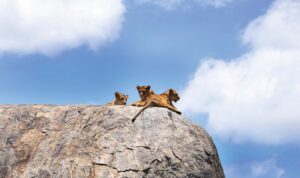
The King of Beasts and Africa’s most famous animal, the Lion (Panthera leo) hunts alone or as a pride. Simba, the name of our hero from The Lion King, is the Swahili word for Lion. We saw this pride of females lording over a Zebra herd in the Serengeti. Though seemingly invincible, Lions are still slaughtered by big game hunters who pay thousands of dollars for licenses to kill endangered animals. 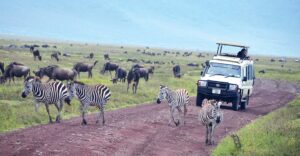
Typical open-topped Land Rover trundles slowly along a well-maintained dirt track inside Ngorongoro Crater in Tanzania. The crater rim, which rises 600 meters (as tall as many Philippine mountains), can clearly be seen at the back. Africa’s wildlife safaris are usually highly organized, with well-tended roads, campsites, and lodges. Those interested in going on an African safari can contact me or go directly to Ndurumo Safaris and Top Climbers Expeditions. 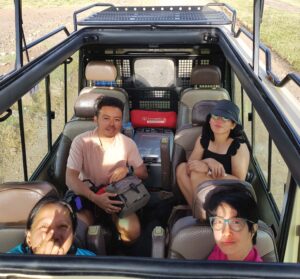
Our happy team of Pinoys on safari in Africa: Rofil, Candy, Grace, and Isoy. We had just returned from Mount Kilimanjaro, Africa’s highest peak, and are all still sunburned – but that’s another story.
WHAT THE FUTURE HOLDS
If you’re interested in booking your own safari, let’s talk on Facebook or Instagram. Remember to pack at least a 200mm telephoto lens, spare batteries, power banks, a good hat, plus a jacket (it can get close to freezing in some areas). Most other accoutrements will be provided by your organizer.
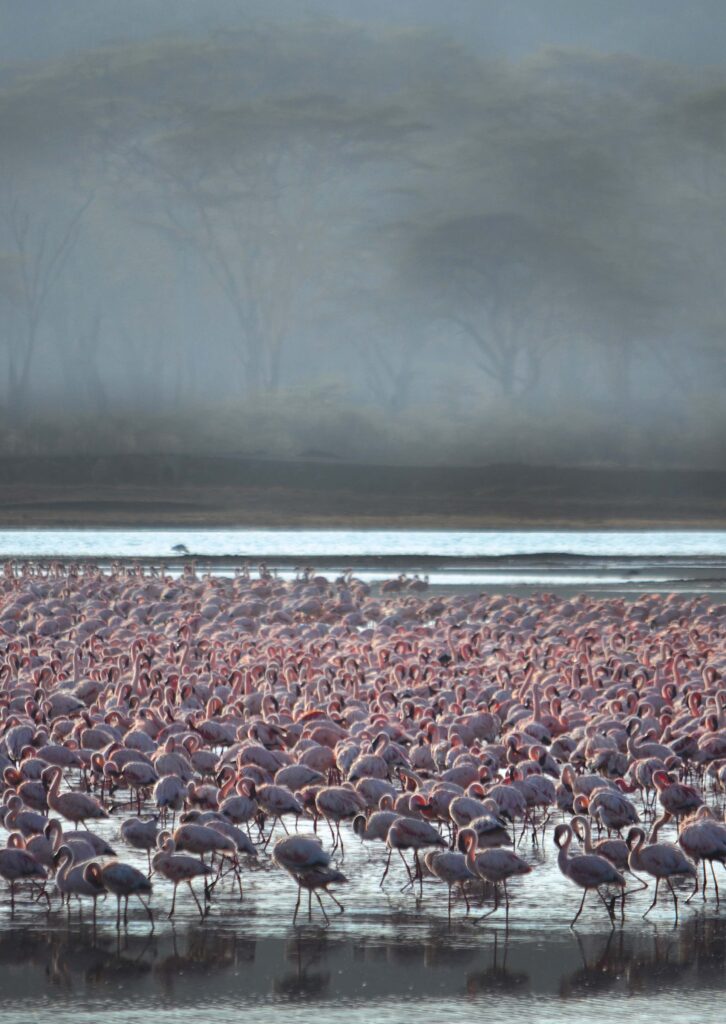
Now, I dream of what the next safari might bring: herds of desert Oryx in the shifting sands of Namibia? Enigmatic mountain Gorillas in the cloud forests of Rwanda? Endangered Great White Sharks off the churning coast of Cape Town? Who knows? These stories might someday appear in the pages of Animal Scene.






